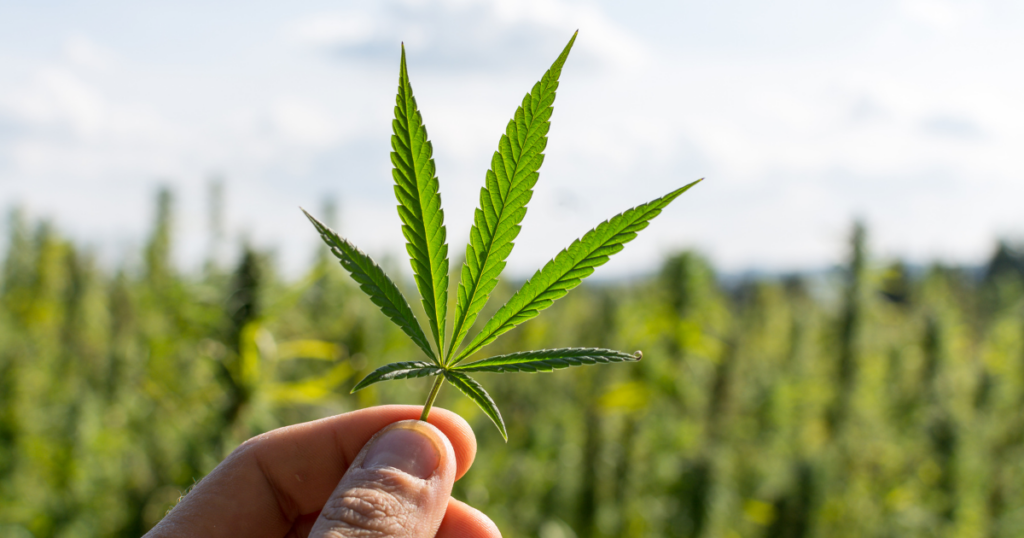The 2021 National Survey on Drug Use and Health (NSDUH) report gives the behavioral health space both positive and negative feedback on the progress being made in the fight against substance abuse. On one hand, problem drinking proved less prevalent among teens and young adults aged 12 to 25 in 2021 compared to 2020. Binge drinking in particular declined. On the other hand, the same age group drastically increased its marijuana intake.
Opioids were predictably the most used prescription drugs, yet the group that used them most preferred prescription stimulants by a narrow margin.
Note: methodological changes between the 2020 and 2021 surveys may account for some data differences, according to the Substance Abuse and Mental Health Services Administration (SAMHSA). In particular, race and ethnicity weren’t taken into account in previous iterations of the survey, but the 2021 NSDUH includes race data. In previous years, age ranges were bracketed differently in some cases also.
Alcohol & Marijuana Data Trends Across Multiple Years
Alcohol Use Among Teens & Young Adults
In general, the binge drinking rate for people aged 12 or older declined from 2020 to 2021. This is just the latest leg of a 3% decline since 2017 when the trend plateaued from 2015. From 2015 to 2021, binge drinking also dropped by 9.8% for those between the ages of 18 and 25, too.
Only 0.4% of teens from age 12 to 17 engaged in heavy alcohol use in the past month according to 2021 NSDUH. For 2020, though, 0.2% more of that group drank heavily, so teens are drinking slightly less. That’s also a 0.7% drop from 2015 to 2021.
Young adults from age 18 to 25 similarly indulged less in heavy alcohol use, dropping from 8.6% in 2020 to 7.1% in 2021. That’s also down 3.8% since 2015 when the rate of heavy drinking among this age group was 10.9%.
Marijuana Use Among Teens & Young Adults
In contrast, marijuana use in the past year went up from 34.5% to 35.4% for those aged 18-25 from 2020 to 2021. Among teenagers between the ages of 12 and 17, a parallel uptick went from 10.1% in 2020 to 10.5% in 2021. For the 18-25 group, this marks a fairly precise return to the same rate seen in 2019.
However, 2019 and 2021 are tied for the year with the peak marijuana use rate in the decade for that age group. In 2011, 30.8% of young adults aged 18 to 25 had used marijuana in the past year. The rate has increased incrementally almost every year since.
NSDUH on How Recently You Abused Substances
When measuring how recently someone abused illicit drugs, the NSDUH targets use within the past year. To do the same for alcohol, though, the report targets use within the past month. This is largely because alcohol isn’t a controlled substance and can be legally purchased by adults of age 21 and older.
For the same reason, past-month use was especially high for alcohol. However, past-month episodes of binge drinking and heavy use are more significant since these indicate problem drinking. These are criteria that factor into an alcoholism diagnosis and the need for alcohol detox if the misuse was consistent.
U.S. Binge Drinking in the Past Month
Alarming levels of binge drinking among the U.S. population aged 12 or older in 2021 are revealed in recently published data. However, the data shows binge drinking decreased slightly overall from 2020 to 2021. Moreover, the bulk of the decrease was among younger age groups.
The report shows that 21.5%, equivalent to 60 million individuals, engaged in binge drinking in the past month. The figures were found to be the highest among young adults aged 18 to 25, with 29.2% or 9.8 million people admitting to binge drinking, followed by adults aged 26 or older at 22.4% or 49.3 million people.
Conversely, the percentage of binge drinking was lowest among adolescents aged 12 to 17 at 3.8% or 995,000 individuals. The 12-to-17 group saw a 0.3% drop from the previous year, which makes a 1.1% decline since 2019. The 18-to-25 group — still leading the pack overall — binged 2.2% less in 2021 than in 2020.
That’s part of a consistent decline of 7.6% since 2015, dropping each year.
Adding The NSDUH’s Race & Ethnicity Component
When analyzing the data by race and ethnicity — a presentation not available for the same data in previous years — the report found that Asian teens and young adults aged 12 or older were the least likely to engage in binge drinking in the past month, with only 10.7% admitting to it.
On the other hand, estimates of binge drinking in the past month did not differ significantly among people in other racial or ethnic groups, and the data for the Native Hawaiian or Other Pacific Islander groups weren’t available.
These findings raise concerns about the impact of binge drinking on individuals and society as a whole. Public health initiatives are required to address the high rates of binge drinking, especially among young adults, and to encourage safe drinking habits. We must take action to reduce the prevalence of binge drinking to improve the health and well-being of all individuals in our communities.
Heavy Alcohol Use in the Past Month
The data has shed light on the prevalence of heavy alcohol use among the U.S. population aged 12 or older in 2021. It shows that 5.8%, or 16.3 million individuals, were heavy alcohol users in the past month. This represents a statistically significant drop from the 6.4% that were heavy alcohol users in a given month in 2020.
The figures were found to be the highest among young adults aged 18 to 25, with 7.1%, equivalent to 2.4 million people, admitting to heavy alcohol use, followed by adults aged 26 or older at 6.3% or 13.9 million people. On the other hand, the percentage of heavy alcohol use was lowest among adolescents aged 12 to 17, with only 0.4%, equivalent to 103,000 individuals, engaging in this behavior.
The report calls on public health officials and policymakers to collaborate on reducing heavy alcohol use and promoting safe drinking behaviors to improve the overall health and well-being of the nation. Individuals who fit descriptions of heavy alcohol use and binge drinking fairly often throughout the year are encouraged to get addiction treatment.
Racial & Ethnic Implications of Heavy Alcohol Use
Furthermore, when the data were analyzed by race and ethnicity, the report found that White people aged 12 or older were more likely to be heavy alcohol users in the past month, with 6.7% admitting to it. Conversely, Black, Hispanic, and Asian people were less likely to engage in heavy alcohol use, with figures of 5.2%, 4.7%, and 1.9%, respectively.
The data also showed that Asian people were less likely to engage in heavy alcohol use than American Indian or Alaska Native, Multiracial, Black, or Hispanic individuals.
These findings highlight the need for effective interventions to address heavy alcohol use in the U.S. population, particularly among teens and young adults. The differences in heavy alcohol use across different racial and ethnic groups also underscore the importance of tailored interventions to address the specific needs of different populations.
Underage Drinking in the Past Month
Underage drinking remains a significant public health concern in the United States. Despite all states and Washington, D.C. prohibiting alcohol possession among those under 21 years old, a substantial number of underage individuals continue to engage in alcohol use.
According to recent data, 15.1% of individuals between the ages of 12 and 20, or 5.9 million people, were past-month alcohol users in 2021. Of these individuals, 8.3%, or 3.2 million people, engaged in binge alcohol use, while 1.6%, or 613,000 people, were heavy alcohol users.
Whites Lead Underage Drinking Rates
Data also showed that underage White people were more likely than those in other racial or ethnic groups to be past-month alcohol users, binge drinkers, or heavy alcohol users. For example, in 2021, 18.1% of underage White people drank alcohol in the past month, compared with 14.5% of Hispanic individuals, 13.2% of Multiracial individuals, 9.4% of Black individuals, and 6.4% of Asian individuals.
Furthermore, underage Asian individuals tended to have lower estimates of past-month alcohol use, binge drinking, or heavy alcohol use than those in many other racial or ethnic groups. In particular, underage Asian individuals were less likely than their Hispanic or Multiracial counterparts to be past-month alcohol users, and less likely than underage Hispanic individuals to be heavy alcohol users in the past month.
Despite the disparities seen among different racial and ethnic groups, it’s key to recognize underage drinking as a serious issue across the board. We should actively work to prevent and decrease alcohol use among young people, as it will also lower problem drinking rates for older age groups.
Past-Year Illegal Drug Abuse
The 2021 NSDUH provided valuable insights into the patterns of illicit drug misuse among people aged 12 and up in the U.S. The survey addressed various substances, like:
- Marijuana
- Cocaine
- Heroin
- Hallucinogens
- Inhalants
- Prescription drugs
- Stimulants
- Tranquilizers
- Sedatives
- Pain relievers
Key Findings
- An estimated 61.2 million Americans aged 12 and up used illicit drugs in the past year.
- An estimated 50.4 million past-year users made marijuana the most commonly used illicit drug.
- An estimated 6.8 million people used prescription drugs non-medically in the past year.
- Pain relievers topped the list as the most misused prescription drug, followed by tranquilizers and stimulants, among those who used them without medical need.
- The 18-to-25 age group used prescription drugs slightly more than those upwards of age 25.
- Although 3.7% of 18 to 25-year-olds used Rx stimulants in the past year, more than 3% used prescription opioids.
- Teens and young adults aged 18 to 25, with an estimated 22.8 million past-year users, exhibited the highest prevalence of drug use.
- Among adolescents aged 12 to 17, an estimated 2.2 million used illicit drugs in the past year.
Drug use among adolescents can have detrimental effects on brain development, mental health, and academic performance.
Latinx Leads Opioid Abuse; Whites Lead Hallucinogen, Stimulant Abuse
Finally, estimates of illicit drug use among different racial and ethnic groups reveal notable disparities. For example, among people aged 12 or older, White people were more likely to use marijuana, cocaine, and hallucinogens than Black or Hispanic people.
Moreover, Hispanic people were more likely to misuse prescription drugs than other racial or ethnic groups. These findings emphasize the need for targeted prevention and treatment efforts to address the root causes of substance abuse and reduce its impact on public health.
Drug Misuse Findings by Substance
As society grapples with issues surrounding drug use, data on the prevalence of commonly abused drugs is critical, including:
The 2021 NSDUH details the extent of drug use among different age and racial/ethnic groups.
Marijuana Findings
- The report shows 18.7% of people aged 12 or older used marijuana in the past year — a whopping 8.6% increase from 2020.
- Teens and young adults aged 18 to 25 had the highest percentage of use, up 0.9% from 2020 to tie their 2019 rate of use.
- American Indian or Alaska Native and Multiracial people had higher marijuana use rates than other racial/ethnic groups.
- Asian people had the lowest percentage of marijuana use.
Cocaine Findings
- Cocaine use, including crack cocaine, was lower than marijuana use, with 1.7% of people aged 12 or older using cocaine in the past year.
- Teens and young adults aged 18 to 25 had the highest percentage of cocaine use.
- However, cocaine use didn’t differ among racial/ethnic groups, except for crack cocaine, where Black people had higher rates of use compared to Hispanic and Asian people.
Heroin Findings
- Among the four drugs analyzed, heroin had the lowest usage rate.
- An estimated 0.4% of people aged 12 or older using heroin in the past year.
- Adults aged 26 or older had the highest percentage of heroin use.
Methamphetamine Findings
Methamphetamine use, which includes illicit use and prescription misuse, was highest among White and Multiracial people, with 1.1 percent and 1.6 percent, respectively, of people aged 12 or older using it in the past year.
Use the Data to Prevent Substance Abuse and Seek Help
The NSDUH data provides a glimpse into drug use patterns among disparate demographics. It’s important to use this information to inform public health policies and interventions aimed at preventing or reducing drug use and its harmful effects on Americans and society.
If you regularly interact with drug offenders, problem drinkers, or known misusers, share this information and impress upon them the gravity of these figures. They must seek addiction treatment before they’re unable to do so. NSDUH reports many respondents had misunderstandings about what medication-assisted treatment (MAT) even is.
Call Landmark Recovery’s confidential admissions team at 888-448-0302 for more information on recovery services. Available 24/7, our compassionate experts are here to provide the support and guidance needed to choose recovery over addiction.

Choose Recovery Over Addiction
We're here 24/7 to help you get the care you need to live life on your terms, without drugs or alcohol. Talk to our recovery specialists today and learn about our integrated treatment programs.








